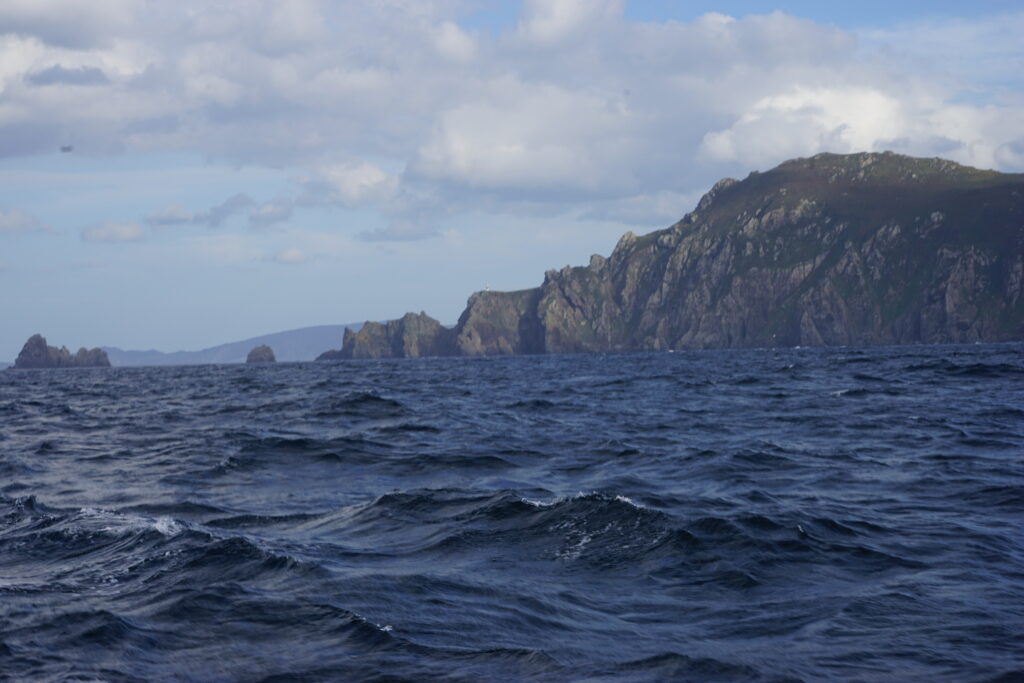We had to stay a week in Brest, mostly to wait for better weather but also to relax a little after the last crossing.
To be quite frank, Brest was not a very interesting city. At least the weather was a bit better than in England, always grey instead of always grey and rainy. In our search for gluten-free food we were always let down. When asking in a patisserie or bakery if anything was gluten-free, the person behind the counter always fiercely shook their head and said “Non, rien”. Quite the contrast to England. Brest itself is a concrete palace with very few old buildings left, as most of it was destroyed during World War II bombings. The main street was okay, with no cars, only a brand new tram line going up to city hall (the worst of all concrete buildings in Brest).
We went to a chandlery a couple of times, but it was quite far away. There would have been a direct bus to it, taking only 15 minutes. But, we had to make a reservation in advance and it was only running early in the morning and the afternoon. So we got up very early one day and called them to reserve the next bus. Turns out you can only take this bus when there is no other option to get to the place, so we had to take several other busses and a long detour which ended up taking more than one hour… Nothing on the website would have suggested anything like that and we thought that maybe the bus driver just wanted a longer break.

La Recouvrance – an old sailboat, Brest’s most iconic monument

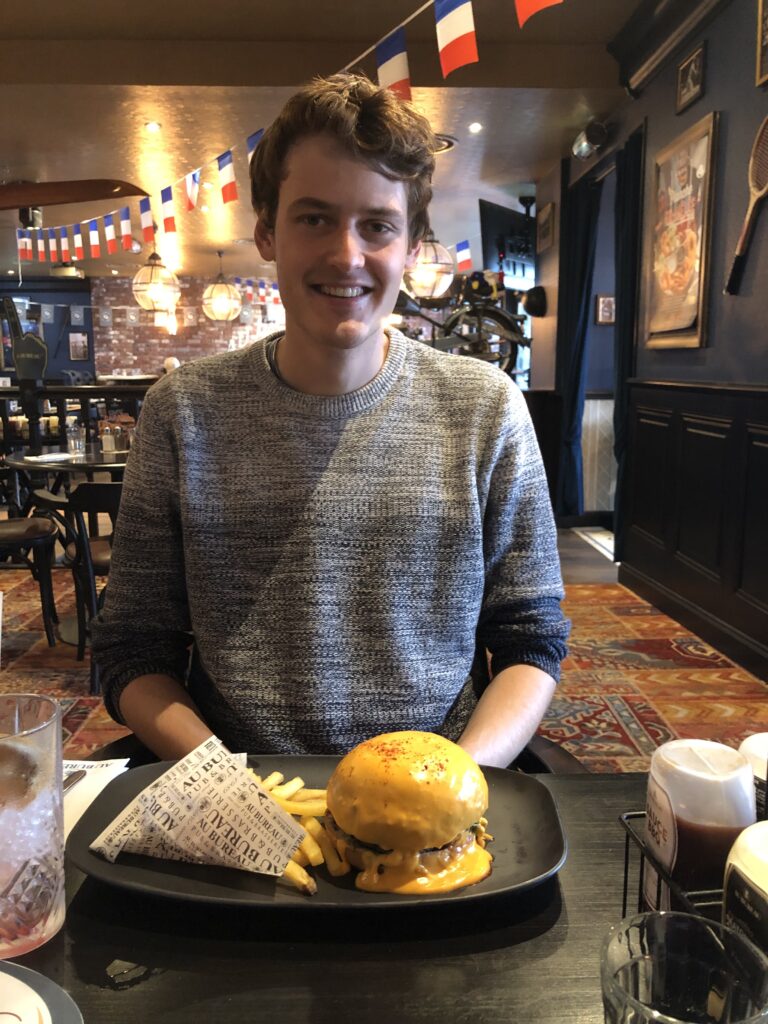
On Saturday, we got up at 6 o’clock in the morning to set off at sunrise and make the most out of our day. It was the first day the waves had settled and were only 2 m, which is very calm for the Bay of Biscay. We knew that in the middle of the bay, the wind would die down but preferred continuing with the motor to having big waves and being seasick. For this reason, we had the not-so-brilliant idea to hastily check the motor in the morning right before leaving, a task which could easily have been done the day before. Marine engines are usually cooled with seawater, which is a much better coolant than air like in cars. There is a hole in the hull of the boat below the waterline, a seacock, which lets seawater through a tube into the motor. There is a strainer before the water reaches the motor which prevents seaweed and other things from getting trapped and potentially stopping the water flow. You should regularly open, check and clean it while the seacock is closed so that no water enters the boat. And well, we forgot to open the seacock up again (a stupid beginner’s mistake). Starting the motor later, we didn’t check if seawater was coming out of the exhaust which indicates that the seawater system is cooling the motor (another mistake which you should never make). Although we knew that you should check for seawater every time, and did so many times before, this time we either simply forgot or thought it was not necessary. The motor started normally, and we left our dock and motored out of the marina. Only then did we realise, that the sounds the motor was making were just a little bit different than usual. After Jenny checked and didn’t see any water splashing out of the exhaust, did I remember that I didn’t close the seacock. We didn’t really know what to do now. We knew that if we left the motor running for much longer it would overheat and cause a lot of damage. We were also afraid of switching the motor off and it not starting back up again, because we weren’t very far from a rocky shore. We switched it off anyway, opened the seacock and started the motor again. It did start like always but we were still missing the splashing sounds of water coming out of the exhaust pipe. So we turned around and went back to the marina making sure to not go too fast and produce too much heat in the motor. Our old spot was already taken up by another boat but after explaining ourselves (in French) we were allowed to stay at the fuel pontoon. We turned the motor off and went down to check it. It was definitely warmer in our motor room than usual and something was making bubbling sounds, not a good sign.
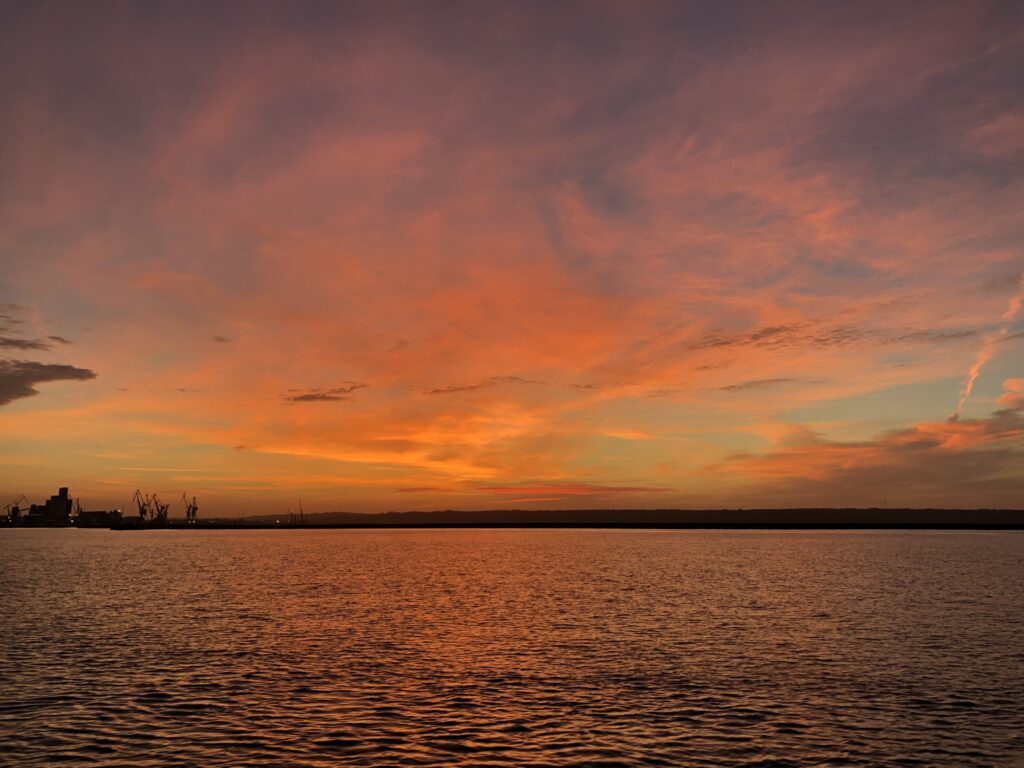
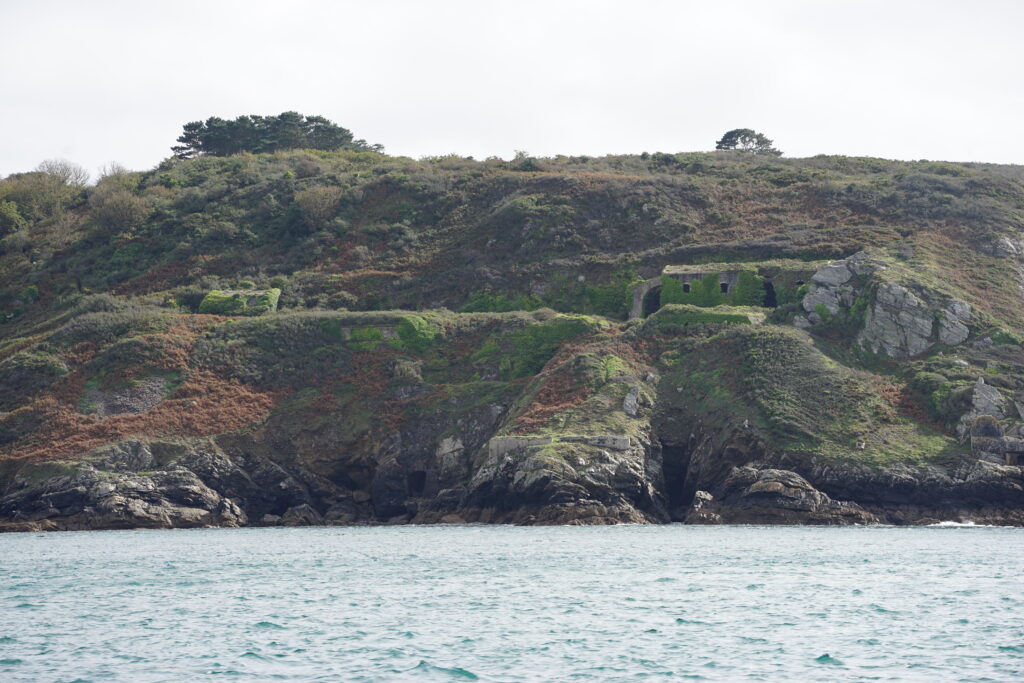
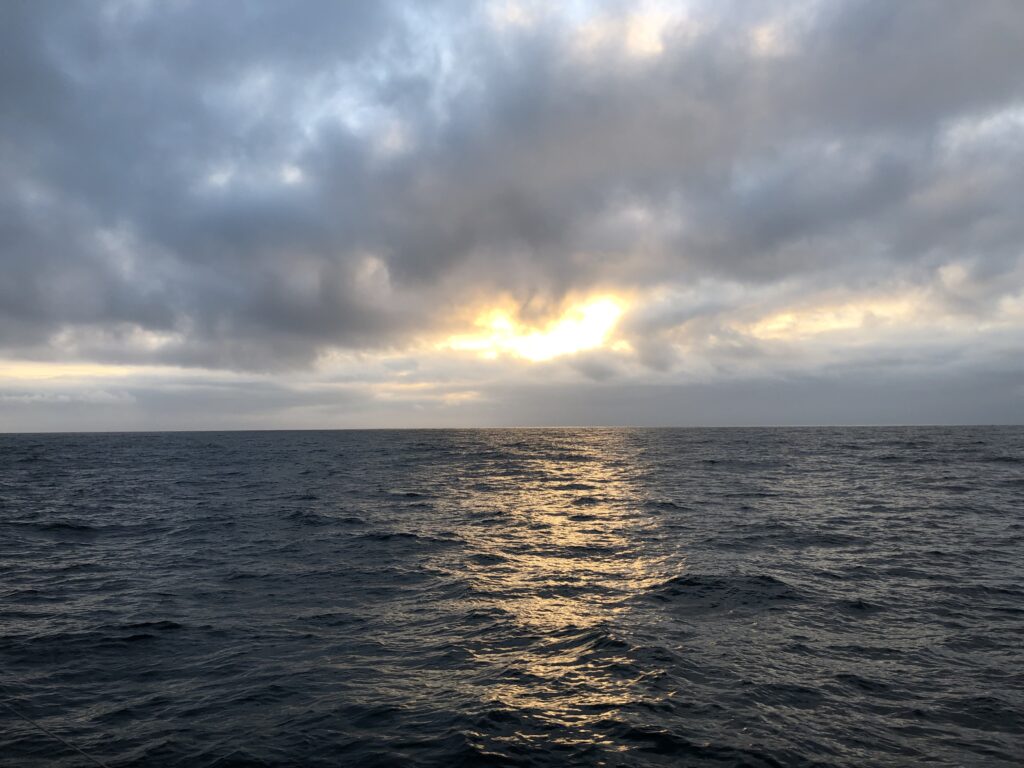
The seawater is sucked into the motor via an impeller, which is basically a propeller inside a tube. The impeller is made of rubber and is turned by the motor. Now that no seawater was running through the impeller, it was just spinning rapidly in the air, creating a lot of friction, heating up and destroying itself. We opened up the impeller and not much was left of it. But reading about other people making the same mistake, we found out that most likely the only thing broken would be the impeller and the rest of the motor should be fine. So it seemed like something we could fix ourselves and we were quite relieved. Sadly, we didn’t buy all the spare parts for the motor yet and needed to find one. So we went to the chandlery again as quickly as possible as it would close soon on a Saturday, but they didn’t sell any Volvo Penta parts. Searching a bit more in the area we found a motor mechanic, who has a shop with lots of spare parts. We had to enter the shop through the back of his garage. It was a mechanics’ garage you couldn’t have pictured any better in a movie. There were around 20 outboard motors, most of them taken apart into hundreds of pieces of metal, spare parts and tools lying around everywhere. Everything was black and dirty from motor oils and you had to find your way through the labyrinth. And in the middle of all was a very friendly older man working on painting a motor, clearly an expert on all marine motors. As our French vocabulary did not include motor parts and how to fix them we had to communicate with hands and feet and managed to explain somehow what we were looking for. He had one spare impeller for our motor left, very lucky! We would have loved to just ask him if he would come and fix our motor because we didn’t really know what we were doing.
Back on the boat we now had to find all the rubber bits of our impeller that were washed into the tubing in and around the motor. After trying to get some of the tubes off the motor for 30 minutes, we almost gave up because they seemed very stuck. After soaking it in WD-40, the sailors’ and engineers’ magic fluid that solves every problem, and poking around with a pointy tool we managed to get all the tubes off the motor and wash out all that was left over from our impeller. Installing the new one was the easy part and went quickly. We started the engine again and seawater was coming out of the exhaust again, what a relief!
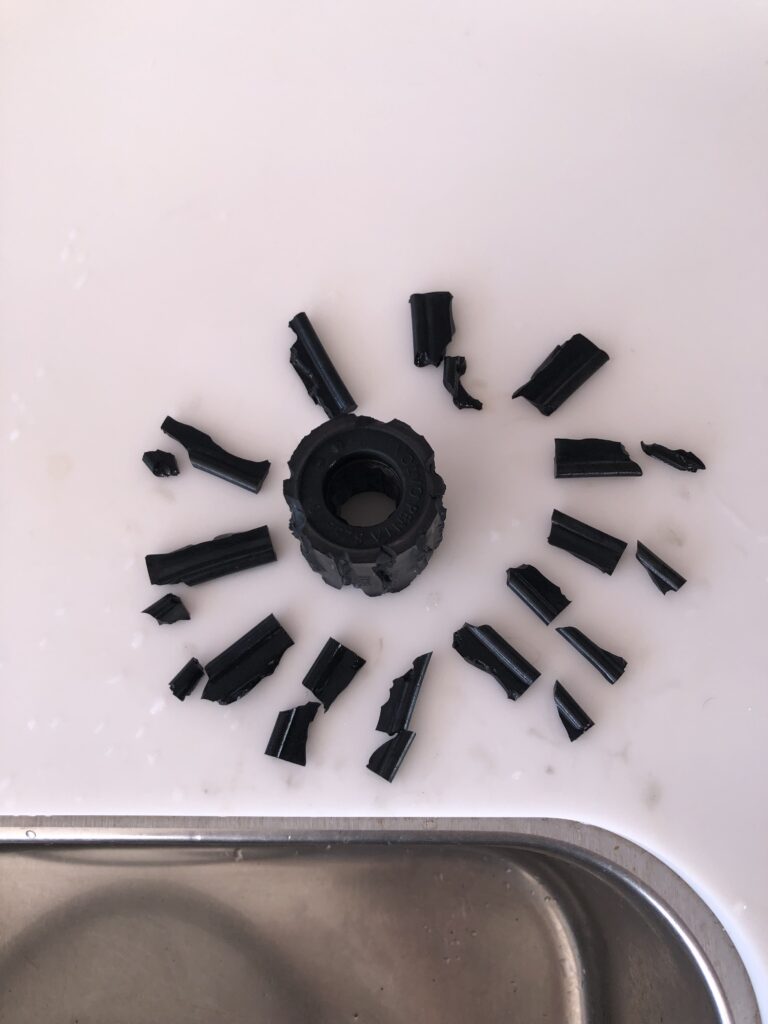
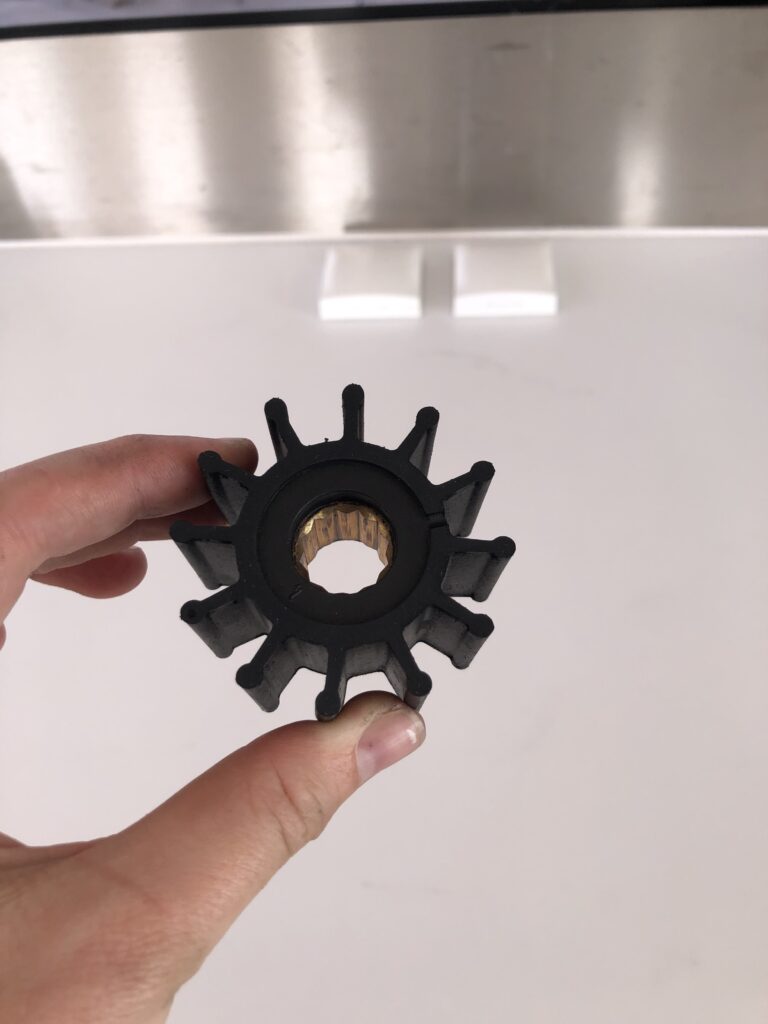
We left Brest now for the second time, with a delay of over 6 hours, but that didn’t matter much. The winds were fair at the beginning, and we tried to get used to life at sea. Due to the light swell, it was going quite well so far. We had a proper meal in the evening and started with our night watches. The wind died down during the night as predicted and we had to motor quite a bit. The first morning was very grey and cold, and we didn’t want to do anything except watch the horizon to prevent seasickness, so we were quite bored and the mood wasn’t great. We started to get very excited though to finally reach Spain and some warmer climates which kept our spirits up. During the second night, there was still not much wind, and we continued with the motor (which by the way worked all fine and didn’t give us any more trouble).
We were still very tired from the previous night shifts and there was very little traffic that night so we decided to start sleeping a bit more during our watches. The truth is, that during the night you don’t see much anyway and as the sky was overcast we didn’t get any moonlight. If there was something big floating in the water right in front of you, a container, a log or even an unlit small boat, you wouldn’t see it until it was too late to change course. And the chance of hitting something in the sea is so slim that it is possible to lie down for a couple of minutes, and only check the wind, sails and horizon for ships every 15 to 20 minutes. This is the way solo sailors have to do it all the time and meant that we were relatively well rested the next morning.
In the morning the wind picked up and we could finally hoist our sails again. Typically we are around 2 kts faster under sail, which makes a big difference when you are going between 5 – 7 kts. The problem was, that the wind was on our nose, so we were sailing close hauled (as close as possible to the direction of where the wind is coming from). This made us deviate a bit from our course and we made landfall at the most northern part of Spain. We were very happy to see land again, but we didn’t realise how much distance we still had to sail to reach A Coruña. When your destination is exactly where the wind is coming from, the time it takes to reach it is roughly doubled because you have to tack against the wind. So we decided to motor against the wind as it was already afternoon and we didn’t want to sail through another night. The wind picked up and the sea was getting very choppy, which means steep waves with a short period. This makes the boat slam into each wave which is very uncomfortable, especially after a couple of hours. Sometimes the bow of the boat got fully submerged and we were afraid that our anchor might fall off the boat and damage the bow. We haven’t securely tied it to the boat yet, but luckily it stayed firmly in its place after every wave. Seven hours later we finally arrived at A Coruña. We felt a bit beaten because the end was not as we imagined. And it would have been possible to avoid that by choosing a better route. Weather routing was something we haven’t properly invested in yet because so far we haven’t done any longer crossings. This time though, we could have motored more to the west during the night where we had to motor anyway. This would have saved us the last seven hours and we could have sailed to the finish during daylight. That was something we would be looking into for our next crossings.
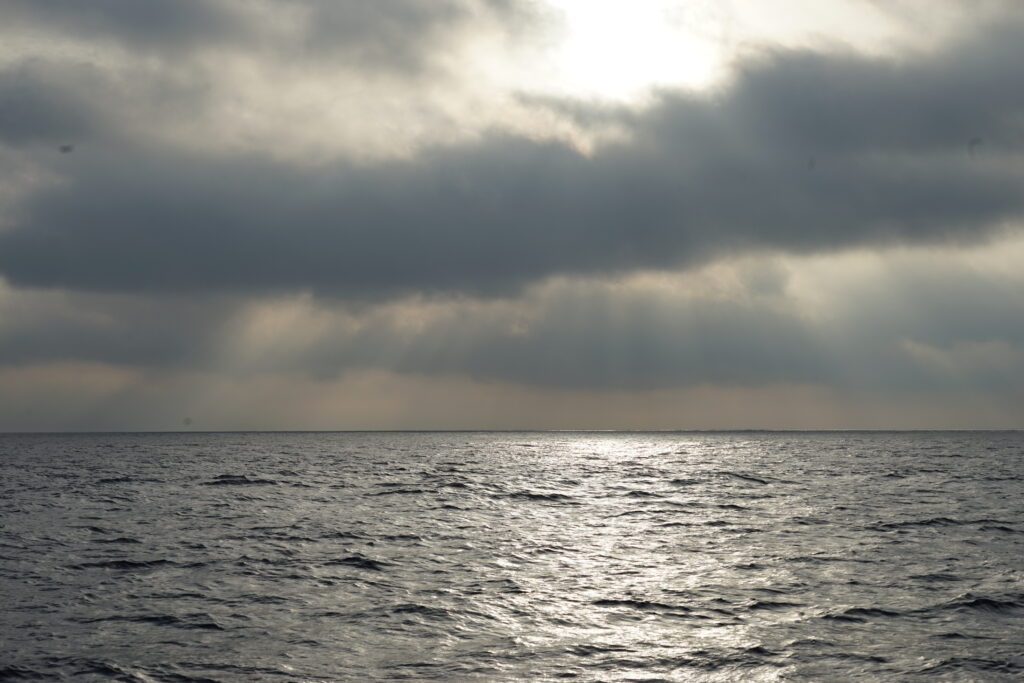
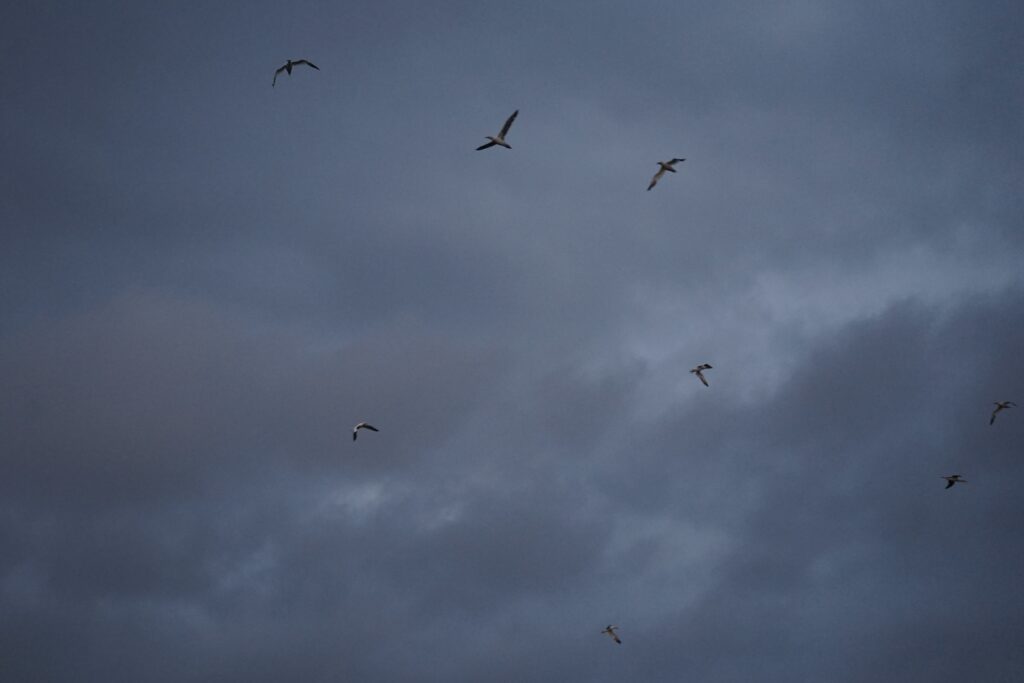
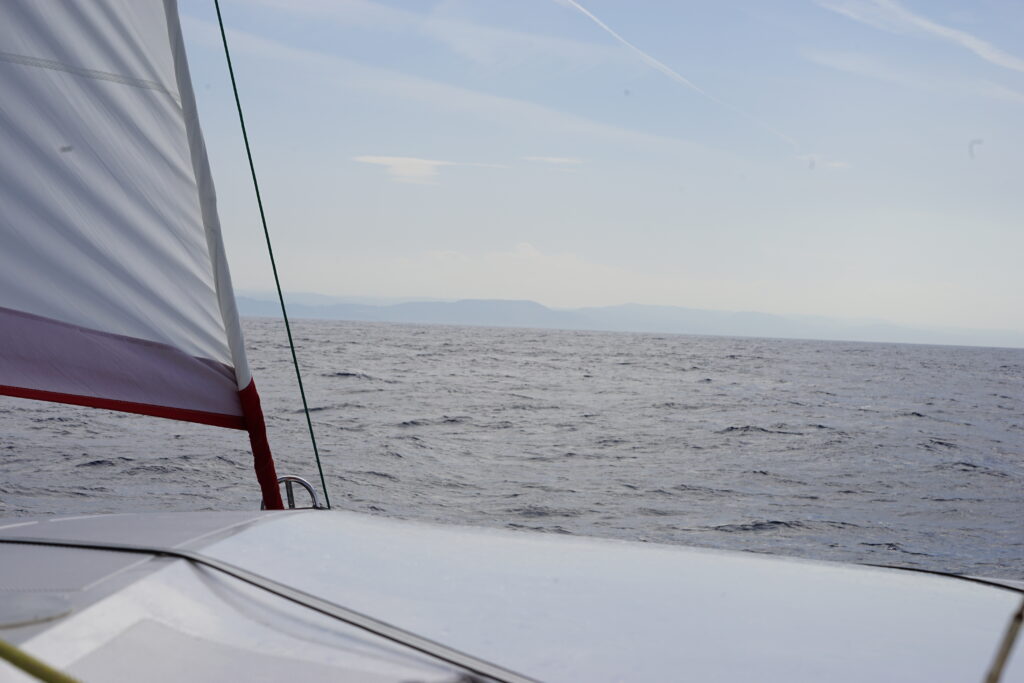
First sight of land after two days at sea!

